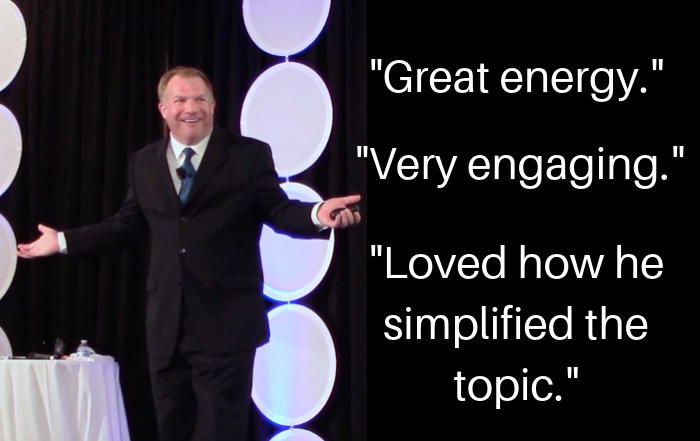 Your must understand the importance of motivating your employees, especially in high pressure situations. To reach your goals, you may need people to sacrifice and you’ve got to be able to get them to buy into your vision.
Your must understand the importance of motivating your employees, especially in high pressure situations. To reach your goals, you may need people to sacrifice and you’ve got to be able to get them to buy into your vision.
This could involve something like accepting a new policy or getting rid of a shortcut that hurts your brand. Whatever it is, you need people to change a behavior and embrace a change. Not doing so will hurt everyone.
Recently, I was reminded of the importance of this process, while at an airport. As a motivational keynote speaker, I spend time on airplanes. That comes with occasional delays.
On this day, bad weather in another part of the country delayed my flight by five hours. While it was scheduled to depart, there was a big problem looming that could cancel the flight.
The flight crew had been working all day and the delays had them close to their limit of allowable working hours. So if the flight was delayed much longer, the crew would not be able to work and my flight would be cancelled.
A late flight is a pain but a cancellation is a major problem. And under a normal boarding process, the flight would likely be cancelled.
How did the flight leave on time and how did more than 150 people, most of whom were strangers, work together to make it happen? It’s all about having the right motivation, delivered in the right way.
Let’s talk about what happened and how you can apply the same principles in your business.
Set the Stakes
From the airline to the passengers, everyone wanted this flight to take place. But in order for it to happen, some behaviors or habits had to change immediately.
The gate agent announced the flight was in danger of being cancelled. The only way we could leave, with enough time for the flight crew to still be able to work, would require us to board very quickly.
“Just find your seats and sit down,” we were told. “Don’t try to squeeze your bags into an overhead compartment. Just sit down.”
People understood what they needed to do. They knew the stakes. And while some might have wanted to find a place for their carry on bags elsewhere, sacrificing some legroom for the bags would help the plane leave with enough time for the flight crew.
In your organization, when you need people to address a challenge and change a behavior, do you clearly state the problem and how their actions can lead to a solution? Motivating your employees demands clarity.
Don’t assume that people will guess what you need. Let your explanation serve as the momentum that leads to a change.
Bend Some Rules
In order to get passengers on the plane as quickly as possible, the gate agent let everyone board at once. There was no loading by zones or airline status.
While this move saved time, it is outside of the normal procedures. But in this case, it was more important for the plane to take off, than to have the regular boarding procedures followed.
Rules and policies are good but at times they may not serve your needs. Understand to reach your goals, you may need to bend a few rules. Some, like flight crew hours, can’t be adjusted.
Creating a shorter path to accomplishing something plays a role in motivating your employees.
Motivating Your Employees with Feedback
When our plane pushed back from the gate, it was obvious the flight was going to take place. But the flight crew gave some additional feedback to the passengers.
“That was the fastest boarding we’ve ever seen,” a flight attendant said. “Our flight was nine minutes from being cancelled, so thank you for moving so quickly.”
Nine minutes is not a lot of time and just a few people’s actions could have produced a cancellation.
When things are hectic and you’re in a rush, it’s easy for forget giving feedback. But if people have had to sacrifice, they want to hear some. Otherwise, don’t expect people to move as fast the next time you ask them to hustle.






